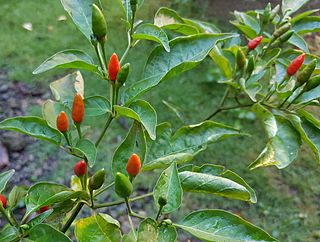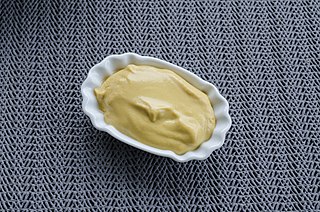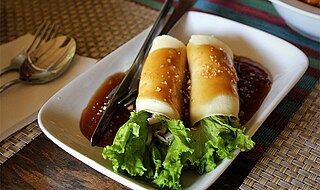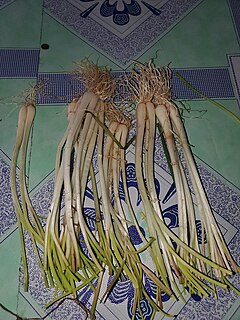
Vietnamese cuisine encompasses the foods and beverages of Vietnam. Meals feature a combination of five fundamental tastes : sweet, salty, bitter, sour, and spicy. The distinctive nature of each dish reflects one or more elements, which are also based around a five-pronged philosophy. Vietnamese recipes use ingredients like lemongrass, ginger, mint, Vietnamese mint, long coriander, Saigon cinnamon, bird's eye chili, lime, and Thai basil leaves. Traditional Vietnamese cooking has often been characterised as using fresh ingredients, not using much dairy nor oil, having interesting textures, and making use of herbs and vegetables. The cuisine is also low in sugar and is almost always naturally gluten-free, as many of the dishes are rice-based instead of wheat-based, made with rice noodles, papers and flour. Vietnamese cuisine is strongly influenced not only by the cuisines of neighboring China, Cambodia and Laos, but also by French cuisine due to Vietnam’s French colonial history.

The Maranao people, also spelled Meranao, Maranaw, and Mëranaw, is the term used by the Philippine government to refer to the southern indigenous people who are the "people of the lake", a predominantly-Muslim Lanao province region of the Philippine island of Mindanao. They are known for their artwork, weaving, wood, plastic and metal crafts and epic literature, the Darangen. They are ethnically and culturally closely related to the Iranun, and Maguindanao, all three groups being denoted as speaking Danao languages and giving name to the island of Mindanao.

Filipino cuisine is composed of the cuisines of more than a hundred distinct ethnolinguistic groups found throughout the Philippine archipelago. A majority of mainstream Filipino dishes that compose Filipino cuisine are from the food traditions of various ethnolinguistic groups and tribes of the archipelago, including the Ilocano, Pangasinan, Kapampangan, Tagalog, Bicolano, Visayan, Chavacano and Maranao ethnolinguistic groups. The style of food making and preparation, and the dishes associated with them, have evolved over many centuries from a largely indigenous base shared with maritime Southeast Asia with varied influences from Chinese, Spanish and American cuisines, in line with the major waves of influence that had enriched the cultures of the archipelago, as well as others adapted to indigenous ingredients and the local palate.

Shrimp paste or prawn sauce is a fermented condiment commonly used in Southeast Asian and Southern Chinese cuisines. It is primarily made from finely crushed shrimp or krill mixed with salt, and then fermented for several weeks. They are either sold in their wet form or are sun-dried and either cut into rectangular blocks or sold in bulk. It is an essential ingredient in many curries, sauces and sambal. Shrimp paste can be found in many meals in Cambodia, Indonesia, Laos, Malaysia, Myanmar, the Philippines, Singapore, Thailand, and Vietnam. It is often an ingredient in dip for fish or vegetables.

The generic term for condiments in the Filipino cuisine is sawsawan. Unlike sauces in other Southeast Asian regions, most sawsawan are not prepared beforehand, but are assembled on the table according to the preferences of the diner.

Chili sauce and chili paste are condiments prepared with chili peppers.

Barbecue sauce is a sauce used as a marinade, basting, condiment, or topping for meat cooked in the barbecue cooking style, including pork or beef ribs and chicken. It is a ubiquitous condiment in the Southern United States and is used on many other foods as well.

Siling labuyo is a small chili pepper cultivar that developed in the Philippines after the Columbian Exchange. It belongs to the species Capsicum frutescens and is characterized by triangular fruits which grow pointing upwards. The fruits and leaves are used in traditional Philippine cuisine. The fruit is pungent, ranking at 80,000 to 100,000 heat units in the Scoville Scale.

Mustard is a condiment made from the seeds of a mustard plant.

Lumpia are various types of spring rolls commonly found in the Philippines and Indonesia. Lumpia are made of thin paper-like or crepe-like pastry skin called "lumpia wrapper" enveloping savory or sweet fillings. It is often served as an appetizer or snack, and might be served deep fried or fresh (unfried). Lumpia are Filipino and Indonesian adaptations of the Fujianese and Teochew popiah, which was created during the 17th century in the former Spanish colonial era.

Hot pot or hotpot, also known as soup-food or steamboat, is a cooking method that originated in China. A heat source on the dining table keeps a pot of soup stock simmering, and a variety of Chinese foodstuffs and ingredients are served beside the pot for the diners to put into the hot stock.

Sambal is a chilli sauce or paste, typically made from a mixture of a variety of chilli peppers with secondary ingredients, such as shrimp paste, garlic, ginger, shallot, scallion, palm sugar, and lime juice. Sambal is an Indonesian loan-word of Javanese and Sundanese origin. It originated from the culinary traditions of Indonesia, and is also an integral part of the cuisines of Malaysia, Sri Lanka, Brunei and Singapore. It has also spread through overseas Indonesian populations to the Netherlands and Suriname.
Fruit ketchup is a condiment prepared using fruit as a primary ingredient. Various fruits are used in its preparation, and it is also used as a spread and marinade, among other uses. Banana ketchup is a type of fruit ketchup that is common in the Philippines. Some companies mass-produce fruit ketchup, such as Philippines-based Jufran, and Chups, a small company based in Washington, D.C., United States.

Sakurab is either a relative of the scallion or a white variant of the wild leek. There have been journals discussing its growth patterns and potential usage as an ingredient in a healthy beverage with evidence to support either view. It is a traditional food seasoning in the Philippines, used in the traditional cuisines in the islands of Mindanao and the Visayas where it is commonly known as sibujing.
Piaparan, also known as pipaparan, piaran, or piarun, is a Filipino dish consisting of meat or seafood cooked in a coconut milk-based broth with grated coconut, garlic, onions, ginger, turmeric, young wild shallots (sakurab), labuyo chili, and various vegetables and spiced with palapa. It originates from the Maranao people of Lanao del Sur. Piaparan means "shredded coconut" in Maranao and is a type of ginataan.
Kuning, also spelled kyuning or kiyuning and Anglicized as yellow rice or turmeric rice, is a Filipino rice dish cooked with turmeric, lemongrass, salt, bay leaves, and other spices to taste. It originates from the island of Mindanao and is a staple food among the Maranao people of Lanao del Sur. It is related to the Indonesian nasi kuning of neighboring Sulawesi, but it does not use coconut milk. The dish is characteristically yellow because of the use of turmeric.
Sinigapuna is a Filipino rice dish cooked with turmeric and other spices. It originates from Kalagan people of the Caraga and Davao Regions of Mindanao. It is similar to the Maranao kuning, and Indonesian nasi kuning.















